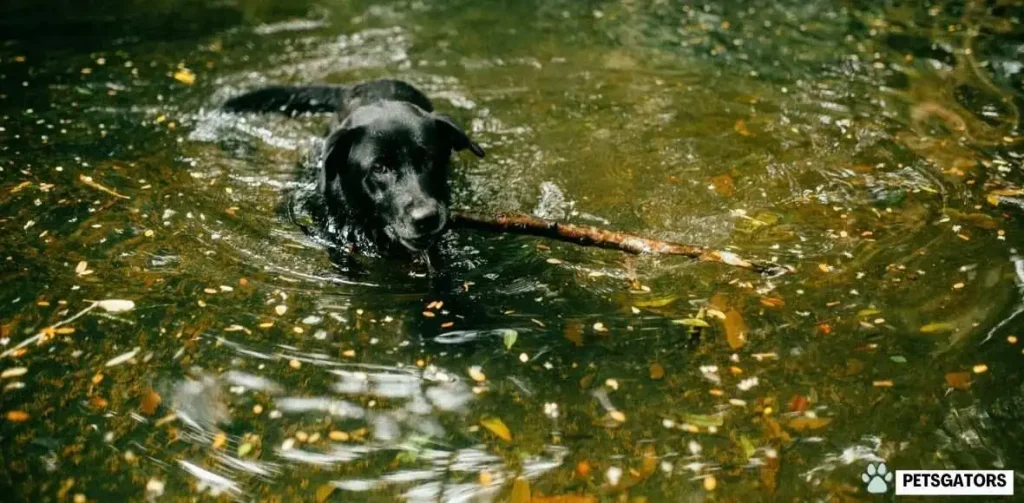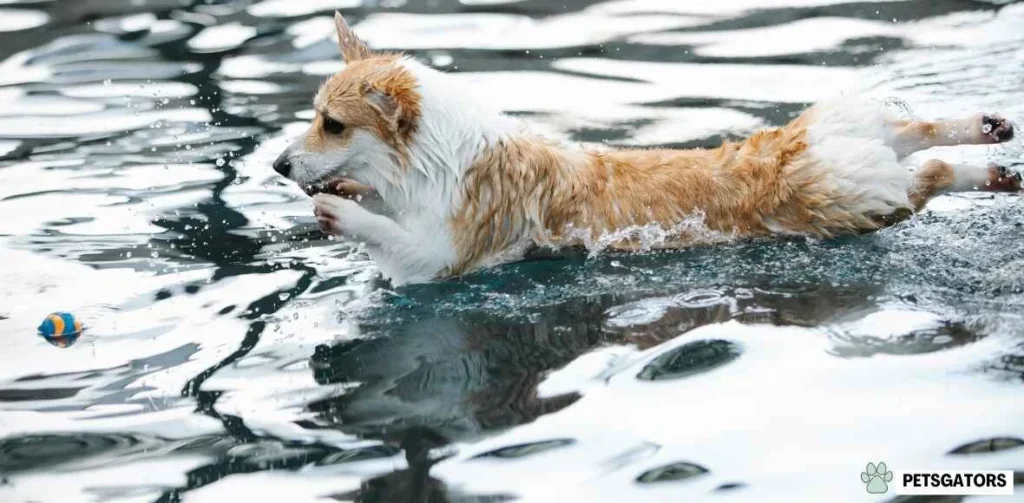Introduction
Dog lovers! As a devoted pet parent and enthusiastic blogger, I’m thrilled to share my insights on a topic close to our hearts – can any dog swim? This question often puzzles many dog owners, especially as we approach the warmer months filled with opportunities for water adventures. Let’s dive in and explore the fascinating world of dogs and swimming.
Table of Contents
Can Any Dog Swim? Understanding the Exceptions
Contrary to popular belief, not all dog breeds are natural swimmers. Breeds like Bulldogs, Pugs, and Dachshunds often struggle in water due to their short legs, heavy chests, or flat faces. It’s crucial to recognize your dog’s physical limitations before planning any aquatic activities. Can My Dog Swim?
Recognizing a Dog’s Swimming Abilities
Wondering if your furry friend can swim? Look for signs like their enthusiasm around water or how they paddle during their first swim. Remember, like humans, every dog’s swimming ability varies and requires patience and observation.

Can Any Dog Swim
The Natural Swimmers: Some Dogs That Take to Water Effortlessly
Many breeds, such as Labradors, Retrievers, and Spaniels, have an innate affinity for water. These dogs often exhibit natural swimming skills, thanks to their physical build and enthusiastic temperament.
The Big Question: Can Any Dog Swim?
Yes, most dogs can swim, but it’s not a universal trait. Understanding your dog’s breed, health, and personality is key to determining their swimming capabilities.
Choosing the Perfect Spot: Safety First for Your Dog’s Water Adventure
When introducing your dog to swimming, choose calm, shallow waters. Avoid areas with strong currents or deep pools, especially for beginners.
Top 10 Swimming Tips for Your Canine Companion
- Start in shallow water.
- Use a dog life vest.
- Keep sessions short and fun.
- Always supervise your dog.
- Rinse off chlorine or saltwater.
- Check water temperature.
- Avoid busy swimming spots.
- Teach them to exit the water.
- Watch for signs of fatigue.
- Praise and treat after swimming.
The Joys and Benefits of Swimming With Your Dog
Swimming is not just fun but also an excellent exercise for dogs. It helps in building muscle, and improving joint health, and is a fantastic way for them to burn energy.

Can Any Dog Swim
Why Swimming Is Essential for Dogs
Swimming provides physical and mental stimulation, aiding in keeping your dog healthy and happy. It’s also a great way for overweight or older dogs to exercise without straining their joints.
Optimal Swimming Times: Making the Most of Your Dog’s Swim Sessions
The best time to swim with your dog is during mild weather conditions, preferably in the morning or late afternoon. Avoid swimming in extreme heat to prevent heatstroke.
Discovering the Wellness Advantages of Swimming for Canine Companions
Swimming offers numerous health benefits for dogs, including:
- Improved cardiovascular health.
- Better muscle tone.
- Low-impact exercise for joint health.
- Weight management.
- Stress relief.
Safety First: Ensuring Your Dog’s Swimming Sessions Are Safe
Always monitor your dog while swimming. Look out for signs of distress, and never force them into the water. Ensuring their safety is paramount.
Guidance and Assistance: Helping Your Dog Master Swimming
Consider professional swimming lessons for your dog, especially if they’re hesitant or new to swimming. Trainers and dog swimming classes can provide the right guidance and environment for learning.
FAQs About Dogs and Swimming
Q: Can Any Dog Swim naturally?
A: No, some breeds struggle due to physical traits.
Q: How do I introduce my dog to swimming?
A: Start in shallow, calm waters and use positive reinforcement.
Q: Is swimming good for all dogs?
A: Generally yes, but consider your dog’s health and breed.
Enhancing Your Dog’s Swimming Experience: A Step-by-Step Approach
Step 1: Assess Your Dog’s Comfort Level
- Observe their reaction to water.
- Start with short, positive water exposures.
Step 2: Gradual Introduction to Water
- Begin in a shallow area.
- Encourage with toys or treats.
Step 3: Building Confidence
- Slowly increase water depth.
- Offer constant support and encouragement.
Effective Swimming Techniques for Beginners
- Encourage Natural Paddling: Support their belly and let them paddle.
- Use Floating Toys: Motivate them with toys that float.
- Stay Close: Swim alongside your dog for reassurance.
Choosing the Best Swimming Gear for Your Dog
- Life Jackets: Essential for safety, especially for non-swimmers.
- Water Toys: Durable, visible toys for fetching.
- Towels and Rinsing Gear: For post-swim care.

Can Any Dog Swim
Understanding the Importance of Post-Swim Care
- Rinse Off: Remove chlorine or salt from their fur.
- Dry Ears: Prevent ear infections.
- Check for Injuries: Look for cuts or irritations.
Swimming Safety Checklist
- Life Jacket: Always have one on hand.
- Fresh Water Supply: Prevent dehydration.
- Shade and Rest: Ensure they can take breaks.
The Magic of Bonding Through Swimming
Sharing swim sessions deepens the connection you share with your furry companion. It’s a shared experience that builds trust and creates joyful memories.
When to Avoid Swimming
- Health Issues: Consult your vet if your dog has health concerns.
- Adverse Weather: Avoid swimming in extreme conditions.
- After Meals: Wait a couple of hours post-meal.
Conclusion
Swimming with your dog can be an enriching experience, offering both fun and health benefits. Remember to tailor the experience to your dog’s abilities and preferences. With patience and care, swimming can become a favorite activity for both of you. Dive into this adventure and enjoy the splash-filled moments with your furry friend!
As we wrap up, remember that swimming can be a delightful and healthy activity for many dogs, but it’s essential to consider your dog’s individual needs and preferences. Whether your furry friend is a natural swimmer or needs a little extra help, the key is to ensure a safe, enjoyable experience for both of you. Here’s to many happy splashes and wagging tails by the water!
This concludes our comprehensive guide on dogs and swimming, offering a blend of practical tips, safety advice, and insightful knowledge to help you and your furry companion enjoy the water safely and happily. Remember, every dog is unique, and their swimming abilities can vary greatly. Happy swimming!
Also Read More: Dive Into Delight: The Ultimate Guide To Dog Tail Swimming Adventures







